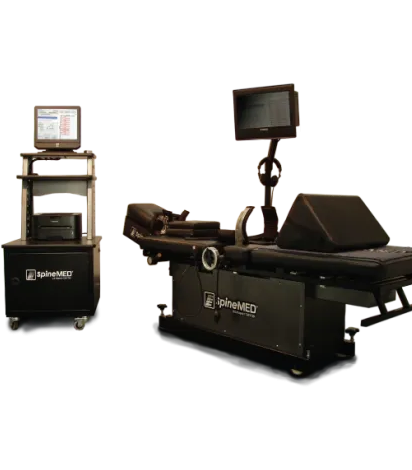Damaged intervertebral discs seldom heal as the discs are constantly under pressure, even while a person is at rest. SpineMED Decompression is designed to reduce pressure inside the discs by gently separating or distracting the injured spinal segments.
Under distraction, pressure on the disc is relieved; allowing fluids, nutrients and oxygen to flow back into the disc. This nutrient exchange helps the body’s natural rebuilding process and may accelerate the repair and eventually heal damaged spinal discs.
In addition, a reduction of intradiscal pressures may help draw the nucleus of a bulging or herniated disc back into the center, thereby relieving pressure on a compressed nerve root- alleviating the problem and the pain or numbness.
